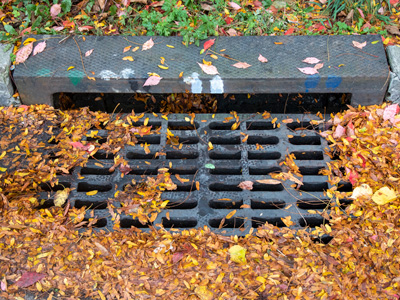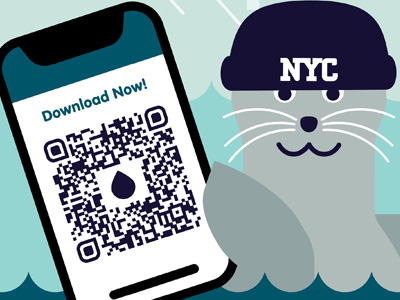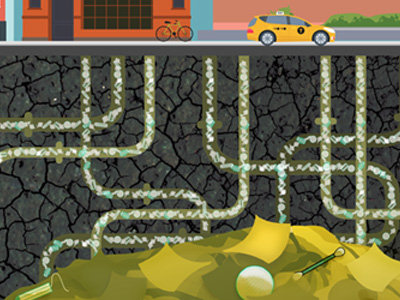
 Environmental Protection311
Environmental Protection311 Search all NYC.gov websites
Search all NYC.gov websites
Flooding and Climate Change
Climate change is causing more sudden and powerful storms that are bringing more intense rainfall to New York City. We have been working aggressively to address flooding caused by climate change-induced storms and have begun planning for true stormwater resilience for New York City. In our planning efforts, we consider the different types of flooding impacting communities and work to tailor solutions to the needs of each neighborhood.
To learn about what to do during or after a flood, visit NYC Emergency Management.
Types of Flooding
There are different types of flooding that can happen in NYC.
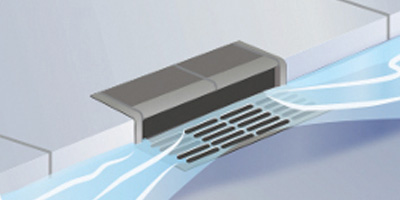
Street Flooding
Leaves and trash can accumulate on top of the catch basin grates and block drainage, causing rainwater to flood the street.
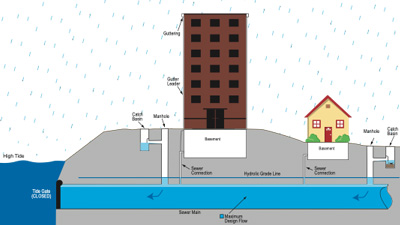
Coastal Flooding
In coastal areas, high tide combined with storm surge can send tidal water back into the sewer system—creating overflows from manholes, catch basins, and basement connections.

Groundwater Flooding
When the ground becomes saturated, water will find penetration points such a crack in the foundation wall or a leaking floor drain. This typically occurs after a rainstorm because prolonged rain leads to over-saturation.
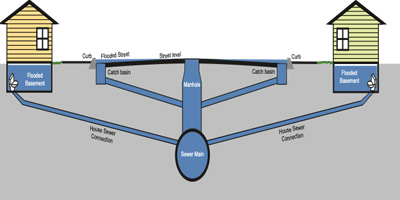
Sewer Backups
Sewers can get overwhelmed during heavy rainfall where amount of stormwater is greater than the capacity of the pipes. This causes overflows from manholes, catch basins, basement sewer connections, also known as Sewer Backups.
The City’s Toolkit
DEP oversees a broad citywide effort to better manage stormwater to prevent flooding and improve the health of our local waterways.
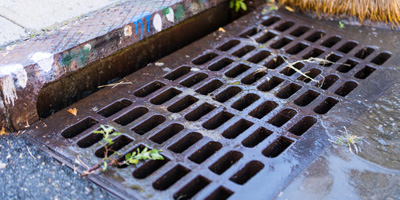

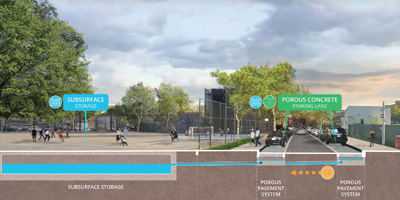
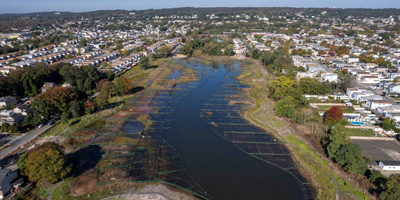
How to Protect Your Home
There’s actually a lot New Yorkers can do to protect their homes and our city from flooding:
Rainfall Ready: A Homeowner’s Guide
For tips to help you protect your home from flooding and sewer backups during rainfall events, download Rainfall Ready: A Homeowner’s Guide in:
English, Español, العربية, 简体中文, Kreyòl Ayisyen, 한국어, Pусский, বাংলা, Français, Polski, اردو, Italiano.
Clear Catch Basin Grates
DEP cleans and maintains 150,000 Catch Basins citywide. Prior to a storm, you can help ensure they’ll function at their best by clearing debris from the grates. If you see a clogged or damaged catch basin, call 311 or fill in this form.
WAIT
You can voluntarily WAIT to use water in your home during heavy rainfall to help keep our waterways clean for your community and wildlife. Learn more about Wait.
Trash It. Don't Flush It.
Fatbergs form when grease, wipes and other stuff get flushed, clogging pipes and draining wallets. Every New Yorker can help by learning how to Trash It. Don’t Flush It.




